Did you know that...? - February 19, 2020
As a freelancer, I have experienced many private practices. The team I work with is like a second family to me. That’s why when in the columns I’ll talk about me playing my role in my team, I'm referring to the kind of situation in which you feel free to express your professionalism, you actively discuss with the whole group and if you go wrong, somebody will be there to correct you like a parent does with their offspring. We are a part of a bigger family and we learn from each other. That’s the reason why my hope is for my words to reach not only other dental hygienists but dentists as well.
| Informative corner |
|---|
|
1) The mouth as the fulcrum of the individual: from the moment we are born we start exploring and experiencing the world through our mouth. As we grow up we begin stating our approval and/or denial by smiling or tightening our lips, refusing to eat. In our teen years we start facing the sexual sphere through our mouth, our lips and our attraction to a smile. 2) Processing a reaction: emotions can follow two distinct pathways. The one that is faster (lasting just a few milliseconds), as well as unconscious, goes through the sensitive neural pathways straight to the amygdala, which is responsible for our basic emotions (fear being among them), triggering a state of muscular tension as a fight-or-flight reaction. The second pathway is the slower, the conscious one, involving the hippocampus. In the case of fear, the endocrine system is involved as well, as the pituitary gland releases ACTH hormone that eventually stimulates the adrenal gland and the release of cortisol. 3) Diaphragmatic breathing: it maximises the oxygen intake, relieving tension from the neck and shoulders. How is it done? The first step is to lie in a supine position and to focus on your belly. In order to feel the diaphragm moving, put one hand on your belly and one on your chest, and slowly start breathing. The goal is to move the hand on the belly up while the one on the chest stays still. 4) Prevention of phobia occurrence: prevention starts from phobic and anxious parents, teaching them not to influence their children with threats and demonising the dental practice. Suggesting visits during the first years of life in order to familiarise them with the environment will help as well. The dental hygienist could easily become the key figure in introducing the little patients to the world of dentistry, through dedicated, playful and interactive sessions |
Let’s begin this column by talking about phobias. Actually, fear is a primordial emotion warning about danger, though it occasionally leads people to the irrational (especially when they face the dental environment). Scientific research talks about many different phobias. The most frequent ones are phobias of animals, heights, closed spaces, storms, let alone dental phobia. An Australian study reports that 16.1% of people suffer from dental phobia. Among them, the most affected individuals are adults between the ages of 40 and 64; women are also more likely to be phobic than men; even the socio-economic factors may play a role in the development of phobias. Talking about percentages, Iceland is reported to have the lowest level of dental phobia, just 10%, while another piece of research conducted on 3041 students and adults reports 42.1% prevalence in Japan.
Unfortunately, everyone has heard at least once in their career an infamous sentence the likes of: “I would have preferred to have a gastroscopy rather than coming here”. Hence facing a phobic patient is always a challenge, both from a personal, as well as a professional point of view.
We know that fear in those people could be related to needles, blood, smells and noises of the practice but the main cause is the dread of pain. Further analysis differentiates the aetiology in:
- Direct conditioning, namely psychological trauma from a past experience that sneaks into the subconscious and arises when the patient is in the practice;
- Behavioural model, due to the continuous anxiety passed from the parents and their descriptions of negative and awful experiences by peers or phobic adults.
A review by Carter E.A. et all. (2014) points out the possibility of genetic vulnerability, however a study conducted on 173 Swedish tweens states that genetics could predict factors related to the dental fear but it could not be strongly correlated to the phobic symptoms.
Odontophobic patient in a dental practice
Symptoms may gradually increase, starting from anticipatory anxiety in the waiting room and leading up to tachycardia, sweating, blood pressure variations, hyposalivation, trembling, sense of drowning and even a serious panic attack or loss of consciousness. According to the already explained mechanism of processing emotions, the patient recognises the practitioner as a threat even though not a direct threat to himself so he tries to calm down. Unfortunately, by then his emotions have already reached the amygdala, which makes this process stronger than our logic. This is where the contradictory nature of the phobia begins. Such cases need to be treated step by step as follows:
- Create a friendly and welcoming environment: according to scientific studies, soothing background music in the waiting room as well as laundry-, orange- or lemon-air fresheners can lower the cortisol level, as measured in saliva, therefore, influencing the overall anxiety level;
- Timing: reducing waiting time and possibly arranging appointments early in the morning, trying to avoid busy days for the patient;
- Welcoming: a stressed person shares the same emotions with close by.
Everyone can have mood swings but the team needs to work together toward a shared goal, “the health and the quiet of the ones addressing us”. The calm, then, is already instilled in the patients in the waiting room, from where the admin staff are together, as far as the machines, their operators and assistants. A smile, the tone of voice, the non-verbal language creates a sense of availability in those who we are facing, making it the first step to work on a stressed hypothalamus.
In serious cases of phobia, pharmacological therapy is given before the appointment and if necessary, psychotherapy sessions are recommended in order to gain better management of the phobia and to minimise the harm that may stem from it.
Suggestions to give to a phobic patient
A good habit is to try to release tension before the appointment. Physical exercise or even a simple 30-minute walk can lower the level of cortisol. The phobic patient will most probably not eat before the visit, even though our advice should be to maintain a constant, regular and healthy nutrition, in order to help the body to cope with emotional states and reducing the possibility of dizziness or fainting.
To avoid emotional overload and chronic stress, suggest your patients get an appointment on a relaxed, not too busy day. Before starting with the procedure, engage with them in a calm mood and start with a generic chat, moving slowly towards the oral cavity.
Announcing your intention while working and asking for permission to continue may help a lot.
Acting like this, the patient recognises their role during the session and won’t look at themselves as the “victim”.
For your own further investigation, I suggest looking into Neuro-linguistic Language (NLP), to learn how to set up a positive dialogue, and the “laughter yoga”. Finally, diaphragmatic breathing with your patient helps to slow down their heart rate. Avoid overloading your appointments and start your appointment gradually, gaining your patient’s trust bit by bit and teaching them how to deal with their emotions.
“Doctor, Doctor...”
It’s worth bearing in mind that the term “doctor” originated from Latin and means to teach. We change the point of view of the patient. He asks us as he knows that we are the correct people to help him feel better.
To conclude, I want to underline the importance of being on the same wavelength as your team in treating a phobic patient in the best way possible. All the team members in a dental practice create values and define new goals. When everyone is aligned and share the same attitudes, your working environment is optimised even for such delicate cases like treating an anxious or phobic patient.
In these delicate cases, you must consider potential downfalls. These are two and involve both sides:
- A high risk of appointment cancellation that could eventually create inconvenience in the management of the practice;
- Phobic patients tend to postpone their treatments, seriously jeopardising their oral health.
Important results can arise even from the smallest steps and an appointmentwith a hygienist can be a part of an introductory approach to building a solid relationship of trust with the patient, overcoming the barriers and gradually agreeing on the goals needed to improve oral cavity health.
Case descriptions
Case 1: Female, 53 yo, non-smoker, no systemic disease. Diffuse demineralization of the enamel, multiple interproximal and cervical carious lesions.
Procedures: initial motivation with home regime for tooth remineralization; upon the establishment of motivation, professional application of fluoride varnish twice per year.
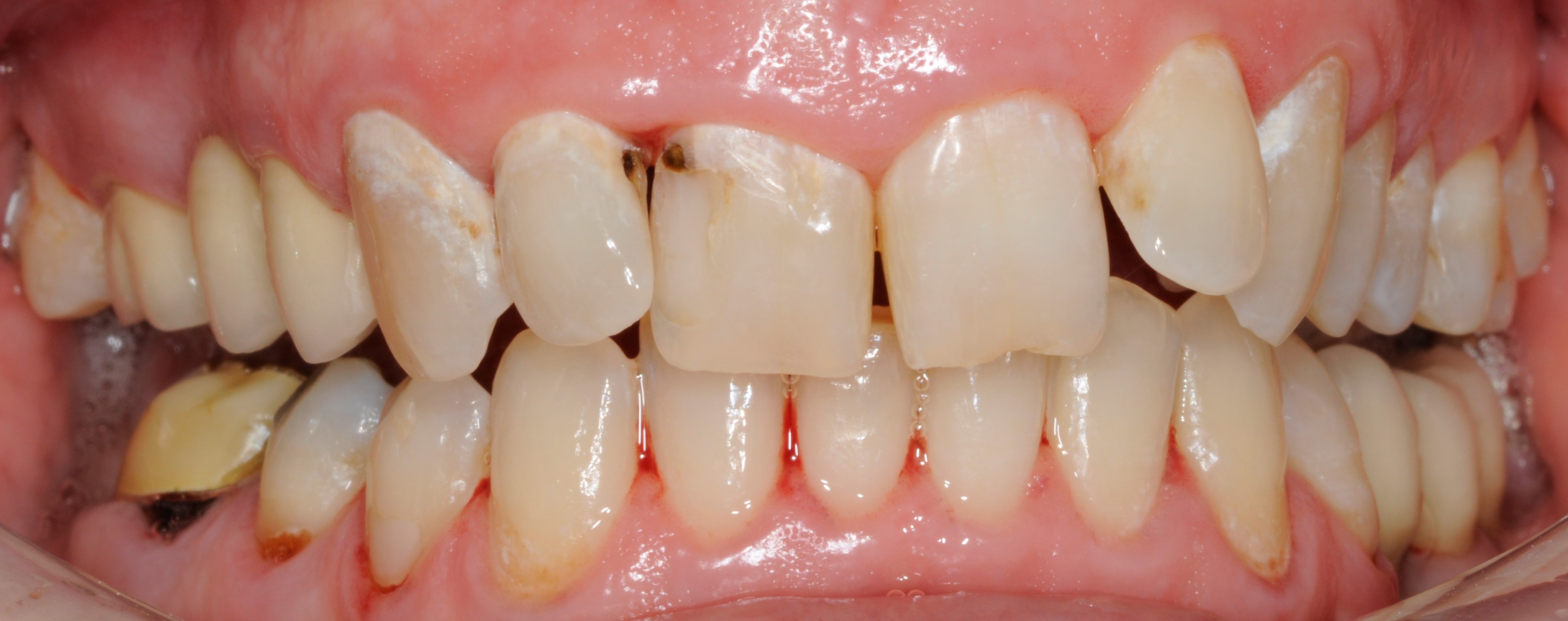 Front view
Front view
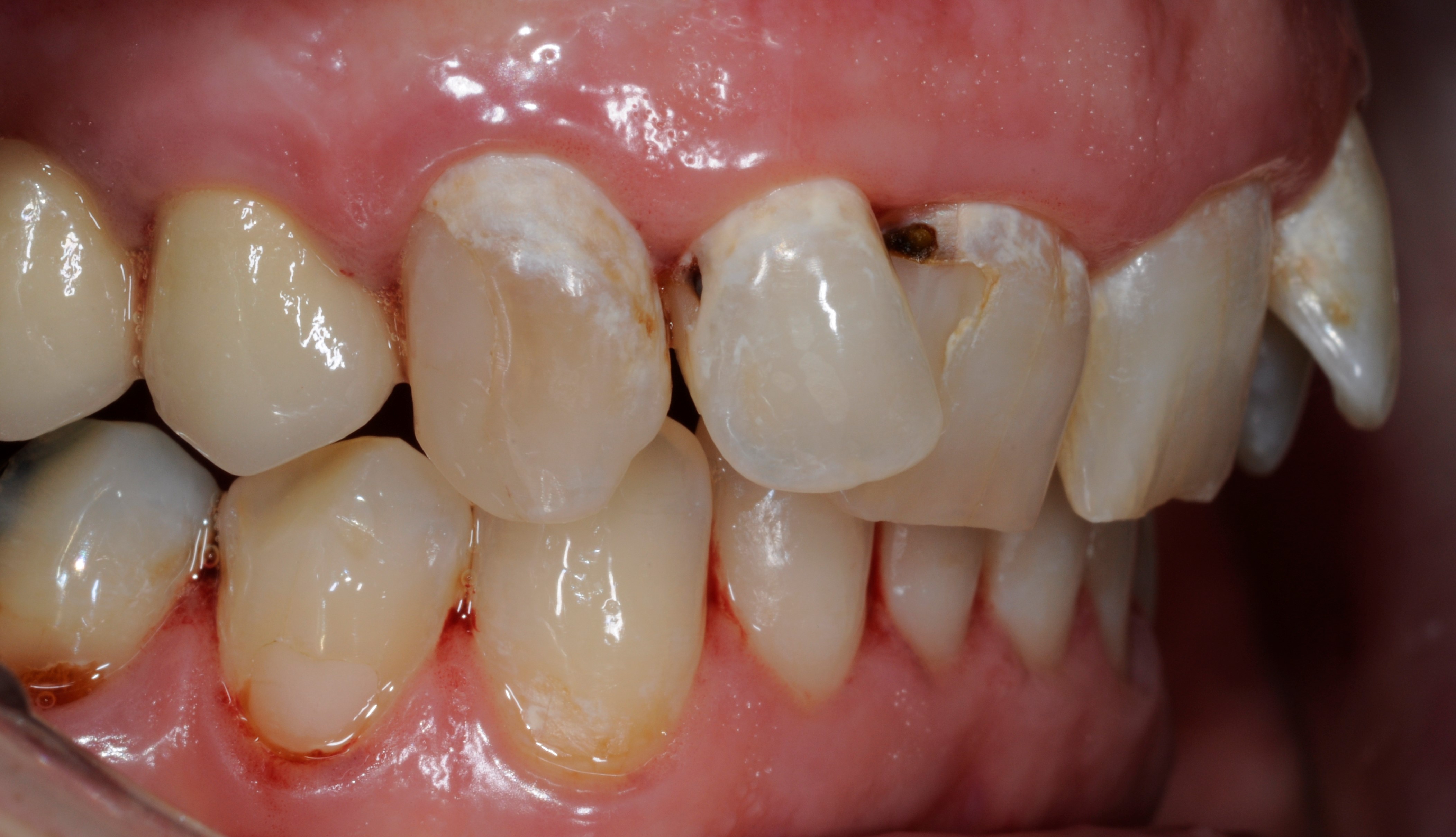 Right view
Right view
Case 2: courtesy of Dr. Alberto Serafini. Female, 26 yo, type I diabetes melitus. Odontophobic, non-smoker. OH instructions and home regime for plaque control, fixed prosthodontic rehabilitation, home regime for remineralization.
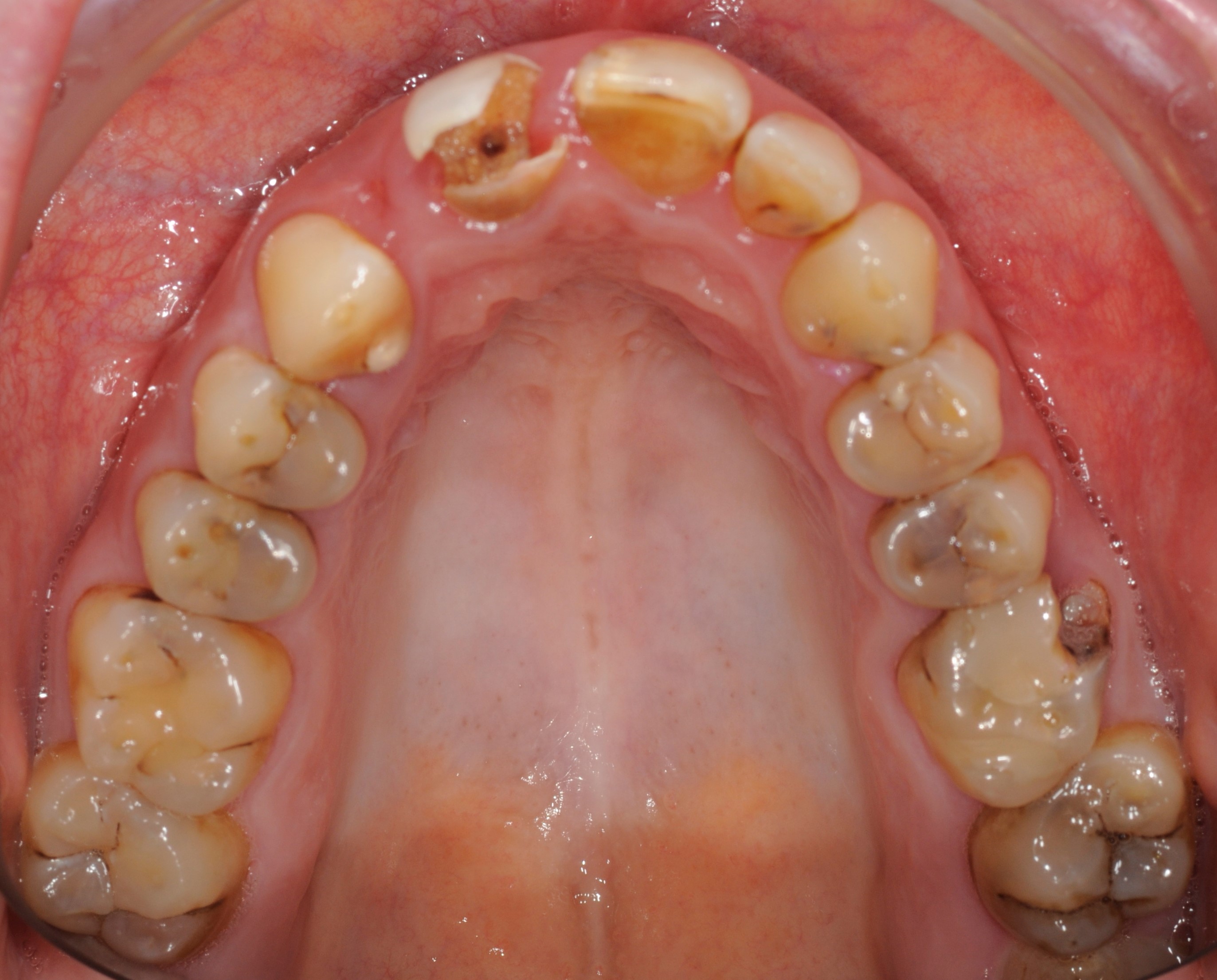 Upper occlusal view
Upper occlusal view
 Lower occlusal view
Lower occlusal view
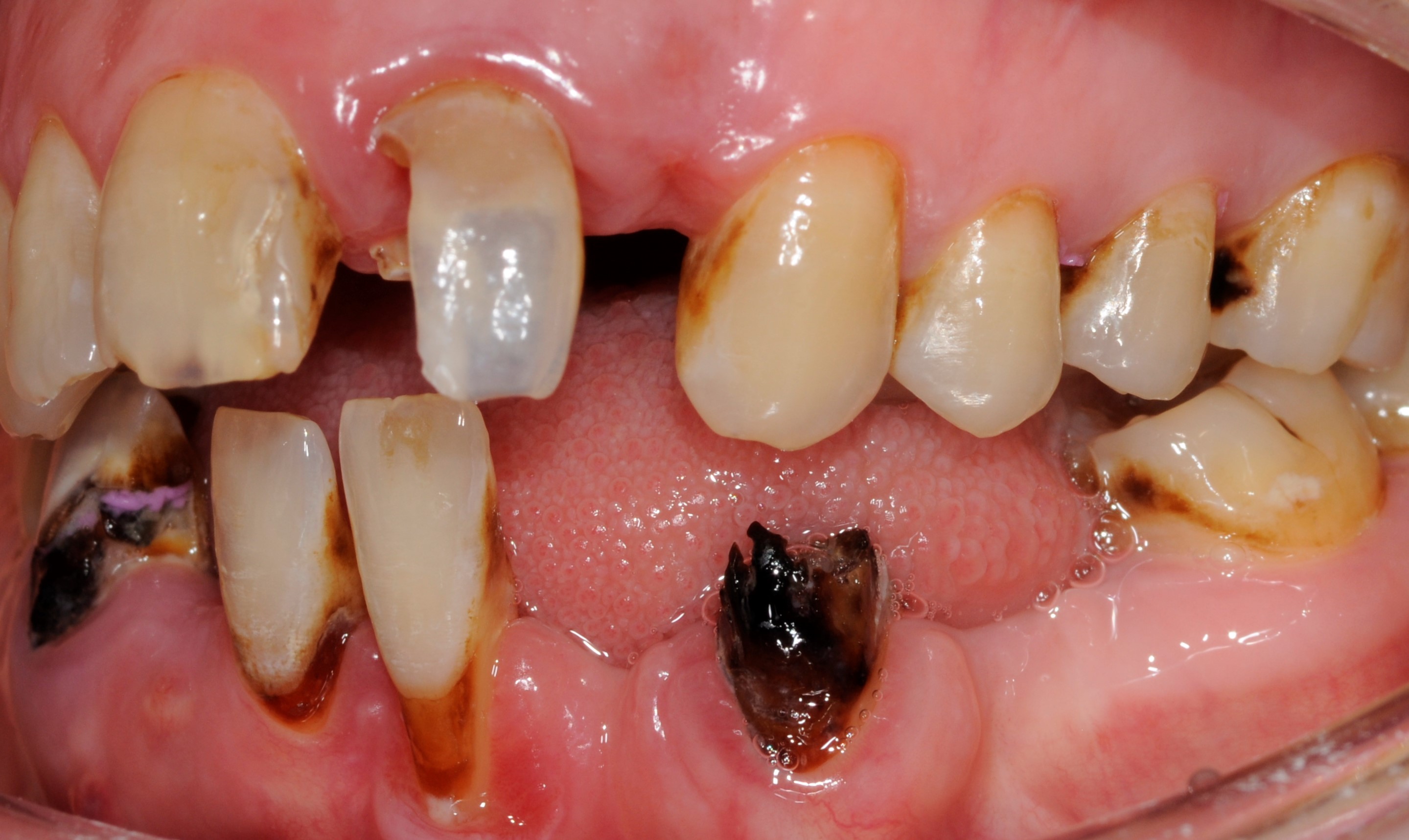
Left view
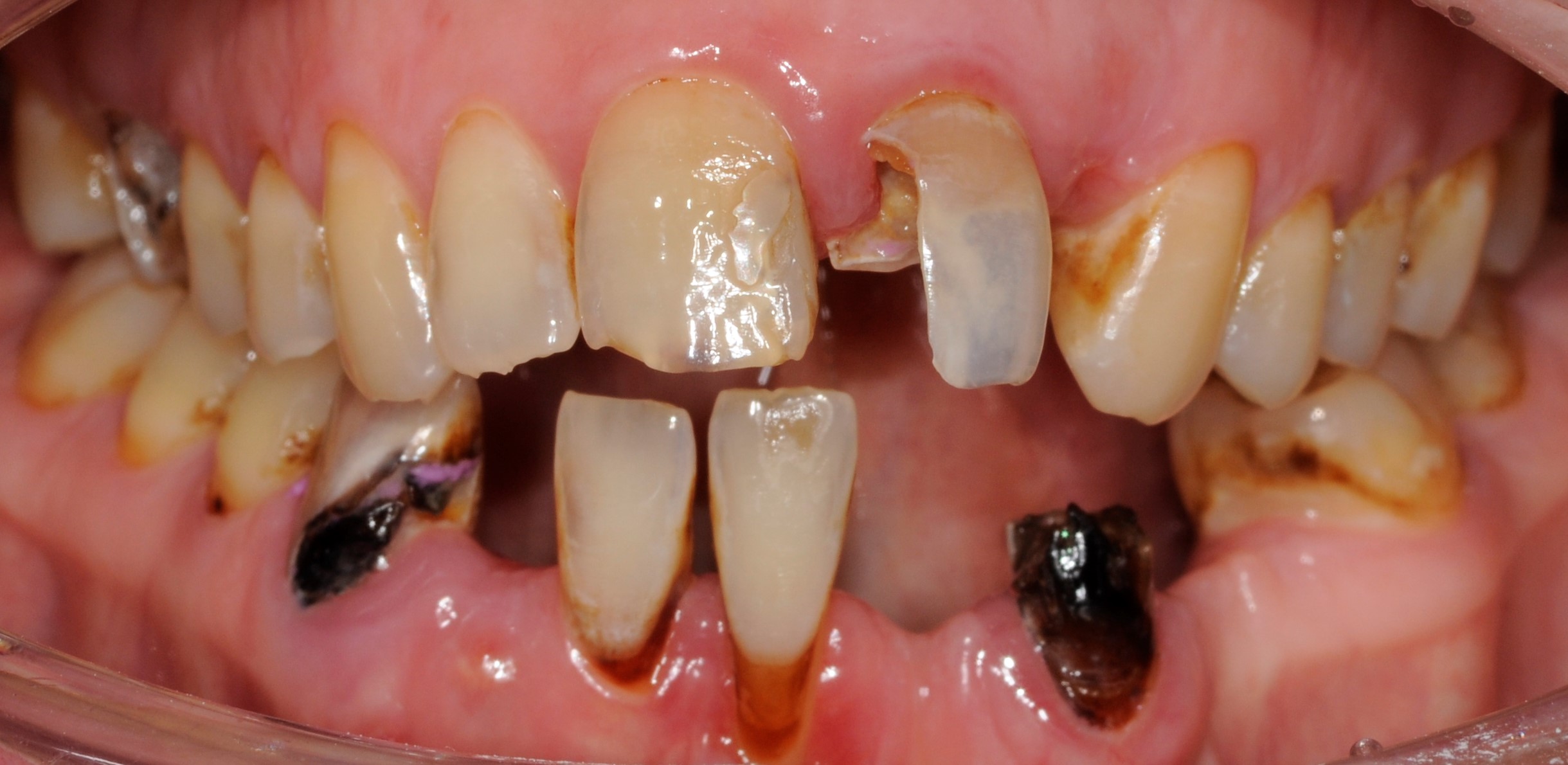
Front view

Front view after rehabilitation
Literature and suggested reads:
Vedani, L. (2017.) Paura Del Dentista Addio: I Segreti Per Vincere La Paura Del Dentista Una Volta Per Tutte e Tornare Finalmente A Sorridere. Rome, Italy: Bruno Editore.
